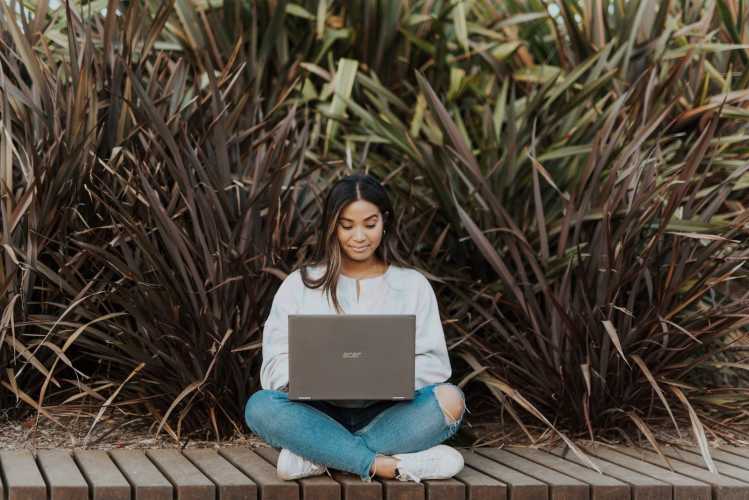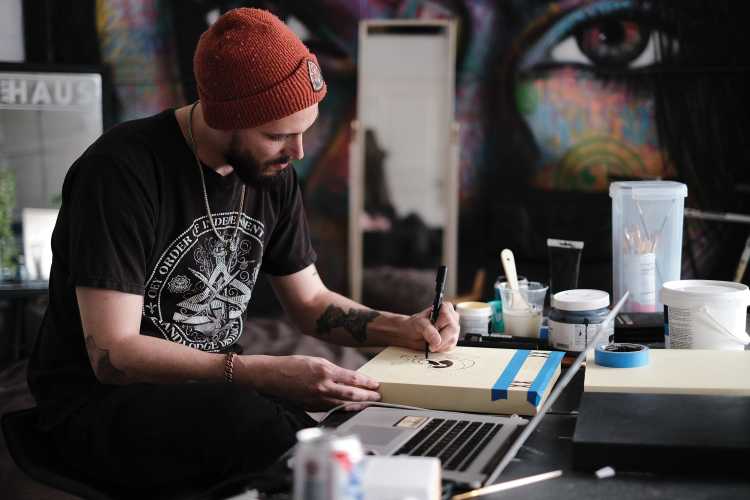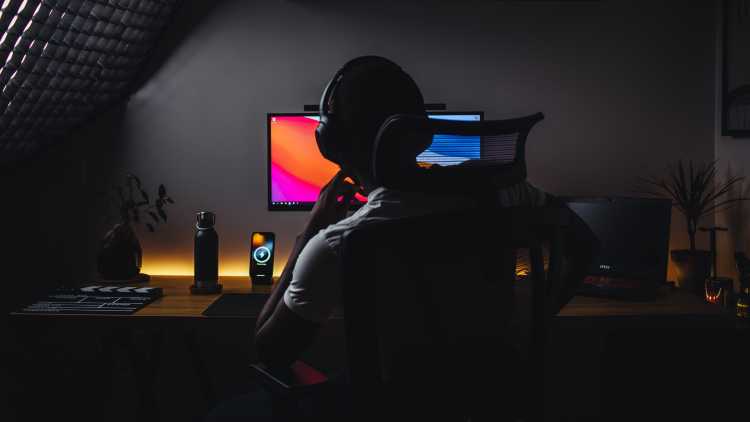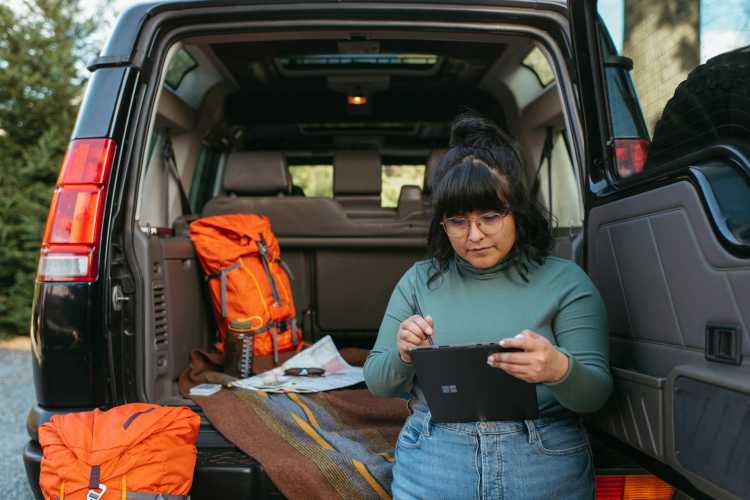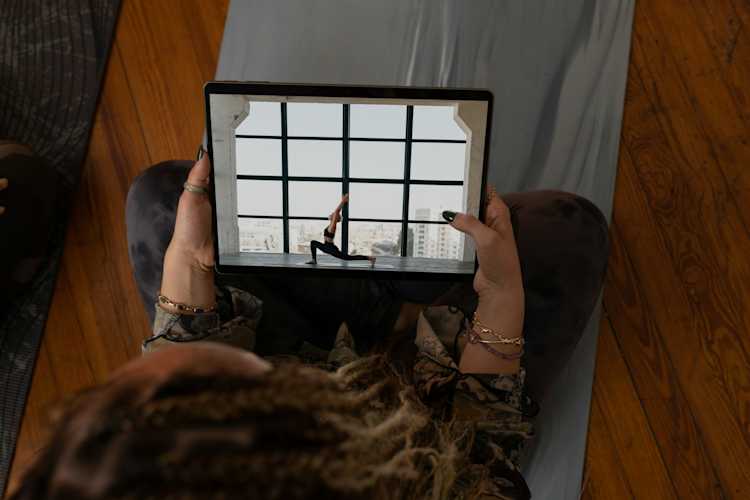Creators & Entrepreneurs
10 Customer Experience Platforms
In this article, we’ll introduce you to what customer experience platforms are, how to use them, and our top customer experience platforms.
Author
Mighty Team
Last Updated
March 24, 2025

Table of Contents
In this article
A recent Forbes article collected 50 stats about customer experience. For example, two-thirds of companies are now competing on customer experience. Companies that focus on customer experience outperform their competitors by almost 80%.
These are some powerful statistics.
If you’re trying to create a great customer experience, you probably know that digital tools can make a big difference. But it can also be hard to choose a customer experience platform with so many out there. In this article, we’ll introduce you to what customer experience platforms are and how to use them.
What is a customer experience platform?
A customer experience platform is a piece of software that helps brands manage and improve the experiences of their customers throughout their entire journey. And because there are so many facets of customer experience, there are a lot of different ways to improve it: things like directly engaging with customers through support and messaging, building communities to foster customer relationships, or using data or research to improve parts of the customer journey.
Bain reports that companies offering a great customer experience can push revenues 4%-8% higher than competitors. And that’s why your brand NEEDS a great customer experience. Plus there are so many great tools to improve it; things like digital platforms, advanced data collection, and machine learning have made it easier than ever to both understand customers at scale and personalize experiences.
And that personalization piece is important too. The data shows an increasing demand for personalization–with 88% of people saying that the EXPERIENCE a company offers is as important as the product.
Key features to look for in a customer experience platform
Not every customer experience platform is the same, so it's important to figure out what’s right for your brand.
How?
Basically, it’s best to identify what customer experience problem you’re solving–or what your goals are–and find the platform(s) that will help you reach those. After all, a customer experience platform can help you accomplish everything from building customer communities to aggregating mass user data to adding a chatbot to your website.
Here are some of the features that the options below will cover:
Community: Customer communities can create an incredible customer experience, letting you build real relationships in real-time. You can also leverage user generated content. For inspiration, look at Apple’s support community, where diehard Apple fans offer answers to users’ questions.
Messaging: A lot of platforms offer various types of messaging for direct customer relationships. This includes SMS and email, but could also include messaging via social platforms.
Direct Service (tickets): Obviously direct customer service is an important part of your customer experience. Some of these platforms offer ways to scale and streamline your CS.
Reputation Management: Some customer experience platforms give you reputation management tools. For example, this could include social media, giving you the power of social listening, monitoring conversations, and responding to questions. Reputation management could also include tools for gathering and monitoring reviews.
Customer Relationship Management (CRM): Usually, these tools help you track your past customer touchpoints and plan future ones. A CRM software can improve customer experience by creating a seamless customer journey.
Live & AI chat: Things like onsite chatbots and live chat can be used to improve customer experience and deal with complaints.
Data management: Most of these tools have data management built in and use it to help you improve customer experience.

Benefits of a customer experience platform
Improve your customer relationships, understand their needs, and get product feedback.
Scale customer experience, either through tech, enabling your own team, or building a customer community.
Understand your user journeys and value ladders–with a combination of collected information (e.g. surveys, reviews) and actual user data.
Improve sales by identifying choke points in your funnel and eliminating them
Track and improve brand sentiment and perception.
Save time by automating customer requests with things like a knowledge base and chatbots.
10 Customer Experience Platforms
1. Mighty Pro
Best customer community platform and app-builder
There’s no question that customer communities can be a powerful way to improve customer experience at scale. For example, QuickBooks runs a customer community for bookkeepers to help them master the software and get answers to questions. The Nike online brand community connects members with exclusive deals, promos, and workout ideas.
And if you want to build a community to improve customer experience, Mighty Pro is the place to do it. Mighty gives you a suite of top-rated community-building features, things like:
Branded live streaming
Engaging discussion forums
Customizable member profiles
Chat and messaging
Subgroups
Member profiles
Data & analytics
We’ve worked with brands like TED and Cambridge University. We’ve built B2C customer engagement apps for brands like Slow AF–from our opening story.
On top of this, we’ve built customer experience apps for B2B communities like Mindbody: a 16,000 member community mastering software for their wellness businesses.

With our built-in AI community, Mighty Co-Host™ community building is radically easier with tools like automatic landing pages, invite messages, and an Infinite Question Engine to keep conversation alive.
Schedule a call to find out more and make sure to ask us how Mighty Pro can pay for itself!
2. Zendesk
Best customer service software
So when it comes to an app for direct customer service, Zendesk is a really valuable tool. It’s a cloud-based platform that gives you the power to manage customer relationships across several different channels: email, chat, and social media. With built-in messaging, you can handle questions and complaints directly across these channels.
When it comes to tracking CS touchpoints, Zendesk includes a ticketing system for creating support tickets and tracking the process to resolution. For a large team, add in things like:
Co-managing tickets
Comments
Assigning team members
Marking as resolved
A lot of CS processes can also be automated in Zendesk, and they claim a 40% cost reduction per ticket and a 20% increase in efficiency. They are also integrating AI into the product for better workflows and writing.
Zendesk goes beyond ticket management, incorporating a bunch of automation features to enhance customer service efficiency. And it provides valuable data regarding your customer service agents' performance and customer satisfaction, offering insights that can guide improvements in your support operations.
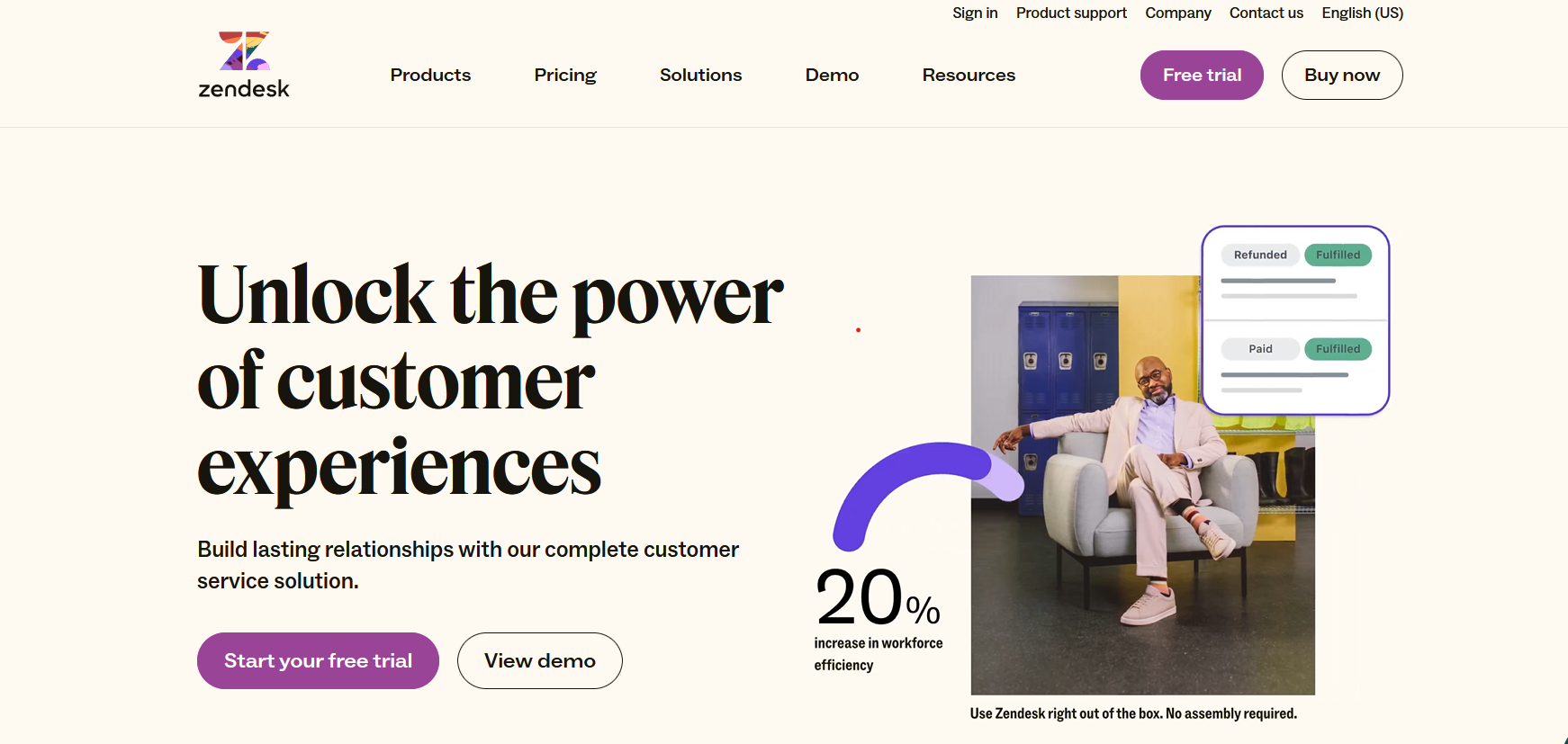
In summary, Zendesk is a versatile customer experience platform that streamlines customer relationship management. It improves customer experience by enabling support across multiple channels, offers ticketing capabilities, incorporates automation features, and provides valuable performance and satisfaction metrics.
3. HubSpot
Seamless integration of CRM and marketing tools
HubSpot is one of the top-rated customer relationship management (CRM) platforms; it effectively combines a CRM with a suite of marketing and customer service tools. The CRM itself is really strong, giving you the power to track and engage with every part of a customer’s journey–including touchpoints and sales.
But with HubSpot’s Marketing Hub, you can combine this with both inbound and outbound marketing tools. On the inbound and outbound tools, you can:
Connect websites
Create content that effectively converts
Flow customers into your CRM
Manage your email
Social media marketing
This lead gen software can then flow into your Sales Hub that lets you monitor customer interactions, schedule demos, and–again–get analytics for all of this. And there are automation options for most of these tools.

Finally, the Service Hub lets you directly manage customer support, with things like ticket tracking, live and automated support functions, and an integrated knowledge base. While there is a learning curve for HubSpot, it’s a powerful customer experience platform that’s useful on a lot of different levels.
4. Microsoft CEP
Best for creating personalized experiences at scale
The Microsoft Customer Experience Platform is focused on helping businesses improve customer relationships by mixing in data with personalization options, as well as integrating customer relationship tools.
Microsoft promises that the tool will help you own customer relationships while letting customers retain control of their own data–”data autonomy”. And each individual customer is situated within wide demographic and behavioral data. Microsoft’s CEP uses this data to create what they call “raving fans,” customizing and personalizing content that users see and creating more relevant customer experiences.
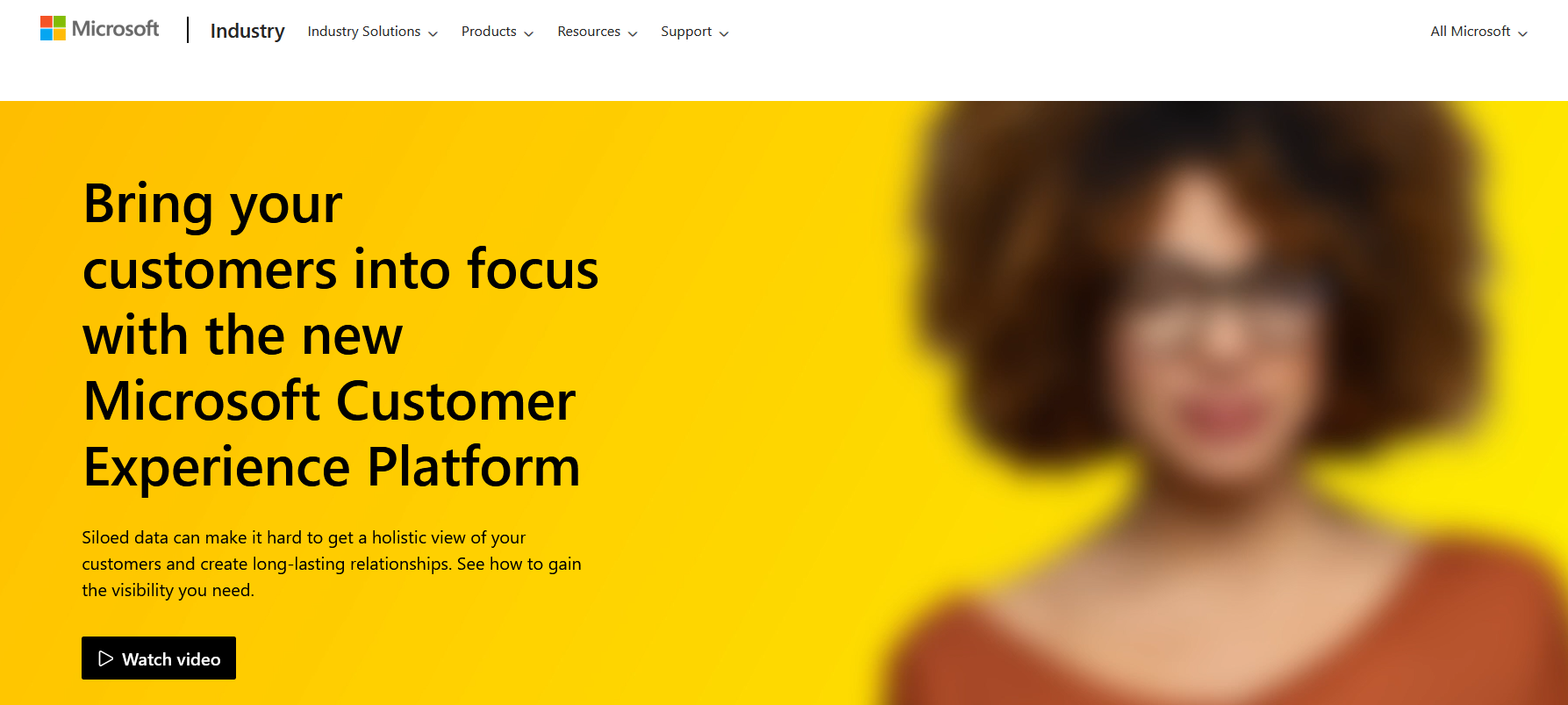
Microsoft has integrated AI into these customer journeys too, which it claims offers a more consistent way to serve your customers. Microsoft offers a range of products through its Customer Experience Platform: Microsoft Advertising, Microsoft PromoteIQ, Dynamics 365 Commerce, Dynamics 365 Sales, and Dynamics 365 Customer Service. It also has a strong learning hub for your team to learn to make sense of data and create these personalized experiences–making it a customer experience platform that offers a lot.
5. Help Scout
Best for inbox collaboration
What do you do if your main source of customer experience is through email, and you want to create a great system from a unified inbox?
You could use Help Scout. It’s an email engagement tool with customer support options that turns your company inbox into an email powerhouse that a team can work on together. With a shared inbox function, teams can work together to track tickets, assign tasks, and mark customer files. Help Scout will also give you data on how your team is functioning and overall satisfaction.
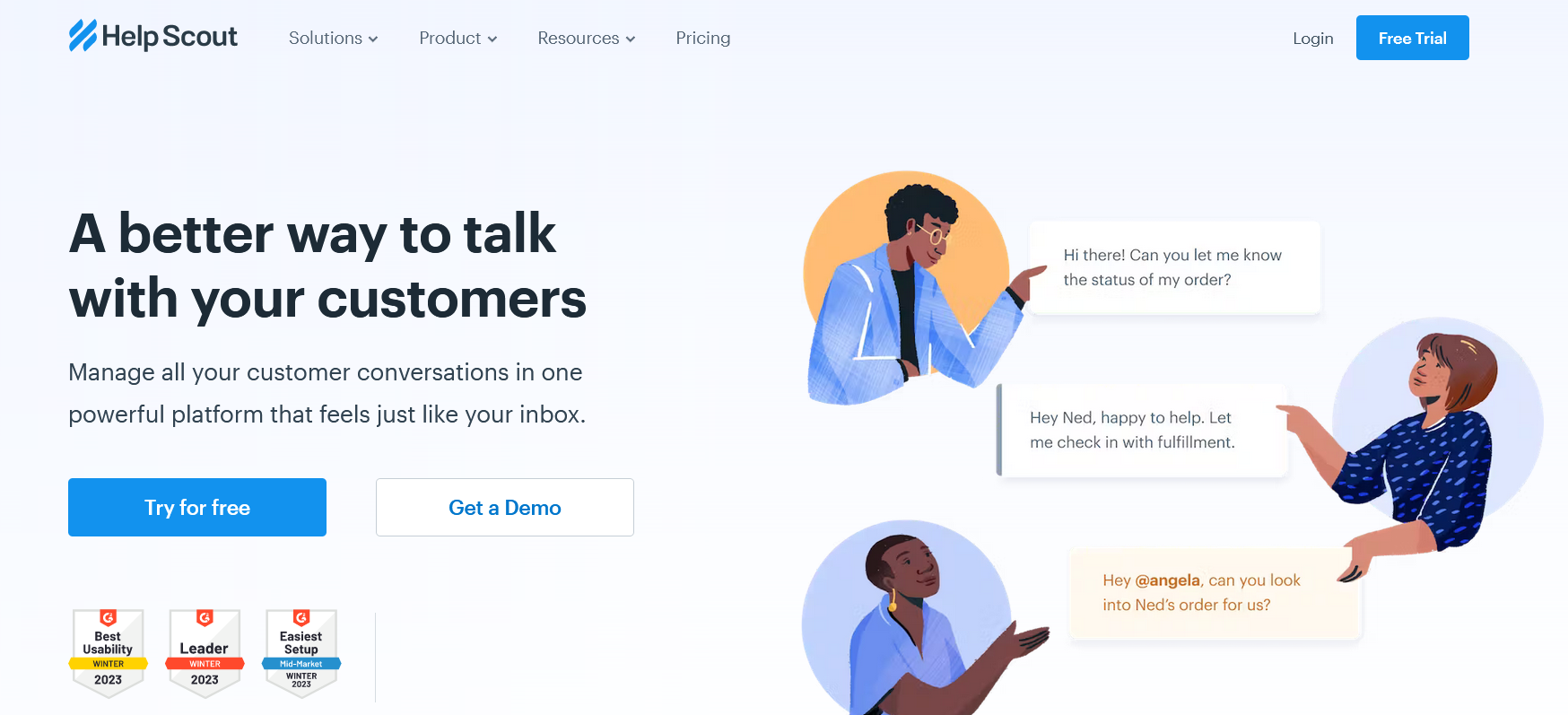
With a few other goodies built-in, like live chats and messaging or clean integration with your knowledge base, it’s a great tool for resolving email-based issues and improving your customer experience.
6. Salesforce
Comprehensive CRM platform
Salesforce is a leading customer relationship management (CRM) platform that offers what it calls Customer 360–a portfolio of tools that mix together AI + Data + its CRM. Much like HubSpot, Salesforce lets you completely manage your customer relationships and integrate your CRM with sales, marketing, and customer service–making it an effective customer experience platform.
With the Sales Cloud, organizations can:
Track leads
Automate sales processes
Connecting these to a customer database
Use data to estimate the potential of success and drive more sales
Understand what works and what doesn’t
Basically, the customer database feature lets you track the entire customer journey.

The Service Cloud is Salesforce’s answer to a direct customer support platform, which lets your organization manage cases, track support tickets, and build the all-important knowledge base. It can also be used to create your own customer-facing apps. All in all, Salesforce is a really effective customer experience platform with a set of products that will get your sales, marketing, and service teams on the same page and working together.
7. Tidio
Best chatbot for your website
If you’re looking for a chatbot feature to improve the customer experience of your website, you could check out Tidio. Tidio promises a 5-minute installation process, with chatbots that automatically trigger to engage with visitors. You can use a chatbot template or build your own from the visual editor.
Once installed, the Tidio bots have a bunch of different functions. For example, it can be used as a cart booster to offer discounts and improve sales. But to improve customer experience, you can also offer a whole support function within the bot–it can use pre-recorded messages, links to articles on your site or knowledge base, and it learns from past conversations.
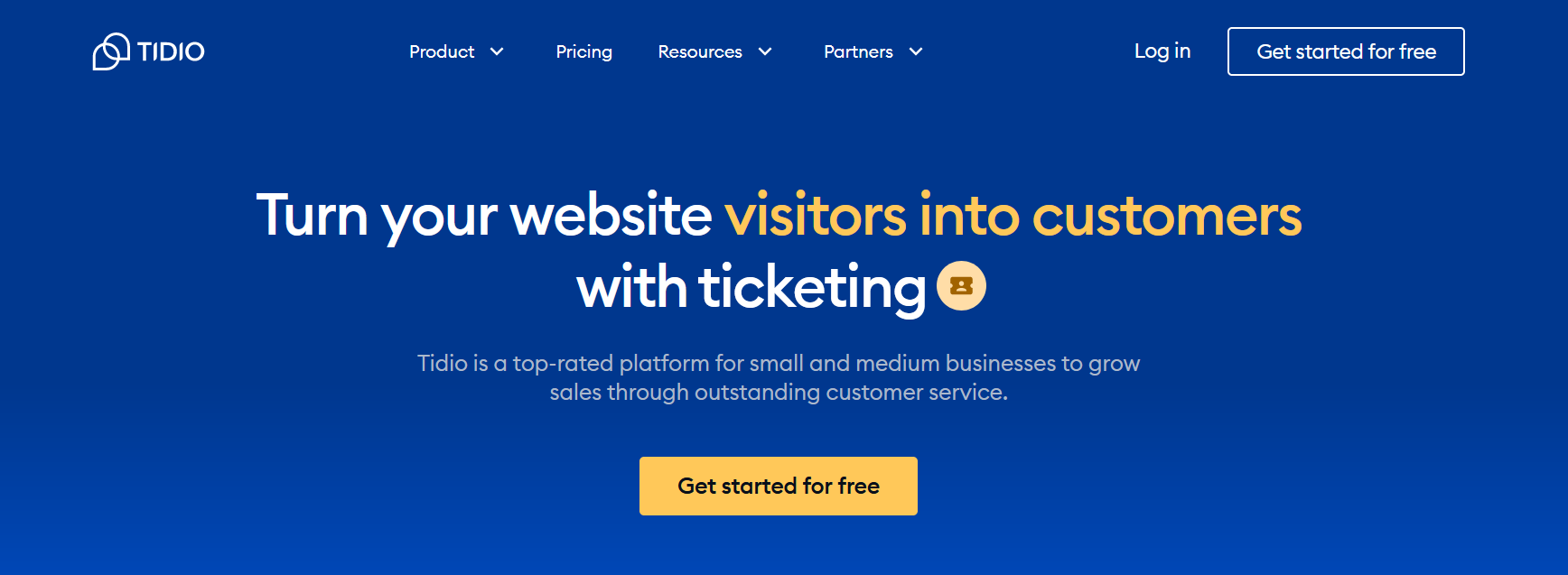
It also comes with useful tracking tools to help understand how your customers use your website. Tidio can also be integrated with live operators for companies with a support team, and you can track customer experience across this whole journey with useful data. Finally, iIt also incorporates messaging across different platforms like messenger and email inboxes to streamline communications, and the same automation can apply to these messaging apps.
8. Amplitude Analytics
Best for product experience data collection
Amplitude Analytics offers another customer experience platform that gives you the data to understand how customers interact with your digital products and services. It tracks actions, engagements, and events, and then uses machine learning to give you powerful insights about what’s working and what isn’t.
One cool feature is Amplitude’s funnel analytics tool, which lets you look at your user data in the context of your entire funnel–giving you a holistic way to spot roadblocks in your Customer Acquisition Journey.
One standout feature that’s useful for understanding your customer experience is the funnel analytics tool. This tool enables businesses to fully understand the customer acquisition journey through data analysis. It also gives you the data to identify bottlenecks, and opportunities to up- or down-sell, which can help your conversion rates.

The data Amplitude gathers can be visualized with a comprehensive set of reporting tools, and you can divide users into different segments. Finally, it can be integrated into the rest of your customer data stack–there are dozens of integrations to choose from.
9. Reputation
Best reputation management tool
Reputation is a customer feedback platform with reputation management tools built-in, feeding these numbers into a data aggregator so you can understand your customers’ experiences and how you measure up to your competitors.
The feedback happens in two ways: direct and indirect collection. These feed into two scores: your Reputation Score and your Customer Satisfaction Score.
The Reputation Score is based on passive listening, things like your brand’s reviews on Google or other review sites, or overall reputation on social media.
Since you can also generate online customer feedback and reviews, the Customer Satisfaction Score can also be a direct measure of what your customers are saying–giving you actionable power to improve your customer experience.
As we mentioned above, Reputation is especially powerful because of its comparison tools, which you can use to understand your competition. And you can respond directly to customers via SMS, phone, and social media channels.
10. Pendo
Best for improving user engagement
Pendo is a really powerful customer experience platform that doesn’t deal directly with customers, but can be used to streamline and improve customer experience–especially for product-focused companies. It claims a 15% decrease in support tickets since you can diagnose and address product issues directly. (Pendo also claims to create a 5% reduction in churn).
Pendo gives you an impressive suite of data with insights into how customers use your products. This is primarily from UX data, but it can be also used to collect user feedback directly. Essentially, you can use the platform to create and share surveys, feedback widgets, targeted messages, and even product walkthroughs. And it has the power to segment customer groups, which can strengthen your communication and problem-solving.

The whole thing is wrapped in a set of useful data tools, which can mix in things like user behavior tracking, product use analytics, and integrated customer satisfaction metrics. These tools can make your products better, and as such Pendo is a useful customer experience platform.
How to choose the right CEP
Here are some things to think about when you’re choosing a CEP:
Easy to use: you want powerful tools that are also relatively easy for your team to understand. This should mean a user-friendly interface and good co-working.
Capabilities: Obviously, as we talked about above, you need a CEP that actually addresses the customer experience needs you have.
Scalability: A good customer experience platform should scale with your business without adding unnecessary complexity.
Integration options: Since most companies use more than once CEP, you’ll need to make sure your tools talk to each other.
ROI: Make sure the cost of the platform will produce enough value to justify the price.
Ready to start?
There’s no other platform like Mighty, bringing your brand, content, and community together on your own app. Just imagine having:
A vibrant customer community that could be managed with as little as a few hours a week.
A support team of account strategists, brand advisors, and app developers behind you–saving hundreds of thousands in salaries.
A community that’s radically easier to run and uses AI and UGC to make your community shine.
Complete set up and build–we handle the tech, you bring your brand!
Wrap-around VIP proactive support.
If you’re ready to build your own customer experience community, schedule a call with us and we’ll show you how to get your own customer community on a branded app for your organization!
Ready to start building your community?
Start a free 14-day trial to explore Mighty—no credit card required.
More like this
Join Mighty Community
Learn the principles of Community Design™ (and see them in action) alongside thousands of creators and entrepreneurs. It's free to join!

Online Courses
Creating a Course
Teaching a Course
Course Platforms
Selling a Course
Communities & Memberships
Community Platforms
Managing a Community
Building a Community
Growing a Community
Monetizing a Community
Content Creation
Creators & Entrepreneurs
Monetization
Content Creation
Starting a Business
Website Builders
Creating & Managing a Website
Events
Event Platforms
Hosting & Marketing Events
Branded Apps
Creating a Mobile App
Coaching Apps
Community Apps
Coaching
Mastermind Groups
Starting a Coaching Business
Coaching Platforms
Filter by Category
Online Courses
Communities & Memberships
Creators & Entrepreneurs
Events
Branded Apps
Coaching
Build a $1 Million Community
This free masterclass went viral—sign up to learn why.






